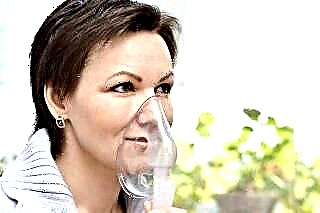Chronic stress is considered a risk factor for the development of many diseases, including cardiovascular disease, endocrinopathies, and malignant neoplasms. Sleep disturbances, imbalance of work and rest, the need to make quick decisions cause constant stress on the nervous system, which is manifested by symptoms from various organs. Arising pains in the heart, prolonged stay in a state of anxiety, throbbing headache, insomnia require drug treatment. The most commonly used drugs for relieving symptoms are Valocordin and Valoserdin.
What are Valocordin and Valoserdin used for?
The drugs Valocordin and Valoserdin belong to the group of hypnotics and sedatives that contain phenobarbital and a derivative of valeric acid.
The active substances of the preparations have different points of application:
- phenobarbital is a barbiturate that has a pronounced anticonvulsant effect (when used in high and medium therapeutic doses). The depressing property of the drug is due to the interaction with barbituric receptors in the central and peripheral nervous system. When binding, the impulse conduction along the nerve fibers is inhibited, and the excitation threshold for neurons rises. In small doses, the substance is used to relieve neurovegetative disorders;
- ethyl bromisovalerianate (ethyl ester of alpha-bromisovaleric acid) is a substance that has a moderate anti-anxiety (tranquilizing) effect. The effect occurs when exposed to GABA (gamma-aminobutyric acid) - receptors on neurons. GABA is the main inhibitory mediator of the central nervous system. A slowdown in metabolism in neurons and a decrease in utilization contributes to a longer influence of the transmitter on impulse conduction.
The use of two sedatives in combination with excipients produces a pronounced sedative effect. The main indications for the use of Valocordin and Valoserdin:
- functional disorders of the cardiovascular system (discomfort behind the sternum, pain with severe emotional shocks without signs of organic damage to muscles or arteries);
- cardialgic variant of vegetative-vascular dystonia;
- neuroses, which are accompanied by an increased level of anxiety and fear;
- personality accentuation (especially in the hysterical type);
- sleep disturbance (insomnia, nightmares, frequent waking up);
- psychosomatically conditioned disorders (objective symptoms that arise after strong experiences).
- vegetative disorders arising from strong excitement.
In clinical practice, both drugs are prescribed to people with emotional lability, more often to women after 40 years.
What is the fundamental difference between drugs?
The appointment of a hypnotic or sedative in each individual case is carried out taking into account the concomitant pathology of the person and the confidentiality of the relationship between the doctor and the patient.
The main differences between Valocordin and Valoserdin are presented in the table.
| Criterion | Valocordin | Valoserdin |
|---|---|---|
| Release form | Vials of 20 and 50 ml | Bottles of 15, 25 and 50 ml |
| Dose of active substances (in 1 ml) |
|
|
| Excipients |
|
|
| Production | Germany | the Russian Federation |
The more pronounced sedative effect of Valoserdin is due to the higher concentration of active substances and the presence of oregano essential oil in the composition. The latter has a sedative, anti-inflammatory and mild antiseptic effect.
One of the most important differences for patients is the price of the drug: Valoserdin of domestic production in pharmacies is cheaper than Valocordin.
Which of the medicines to give preference and in which case?
The identical qualitative composition of the preparations determines the uniform indications for the appointment of Valocordin and Valoserdin. However, experienced specialists differentiate the approach to the treatment of each case depending on additional symptoms and pathologies. Valocordin is an older drug, tested by many generations. Most often, the remedy is prescribed:
- patients over 60 years old;
- people with severe pain in the heart. A high concentration of peppermint essential oil has a distracting effect that relaxes spasmodic muscles of the coronary vessels and improves blood delivery to the myocardium;
- patients with mild arterial hypertension (systolic pressure less than 160 mm Hg);
- patients with cardialgic variant of vegetative-vascular and neurocirculatory dystonia.
Valoserdin is more often prescribed to patients with neurological symptoms, which is due to a higher dose of anti-anxiety substances. The drug is used for:
- insomnia, nightmares;
- patients in an anxious or depressed state;
- mentally caused autonomic disorders.
If it is possible to prescribe any of the drugs, the doctor is obliged to inform about the acceptable choice of the patient and explain the fundamental differences.
Conclusions
Treatment of emotionally or mentally related disorders (shortness of breath, chest pain, weakness, dizziness, insomnia) is carried out with the help of small doses of anti-anxiety drugs. The widespread use of Valocordin and Valoserdin in clinical practice is due to the high efficiency of drugs for the symptomatic treatment of diseases. A similar composition allows the doctor and patient to choose the most appropriate option for therapy in each individual case.



